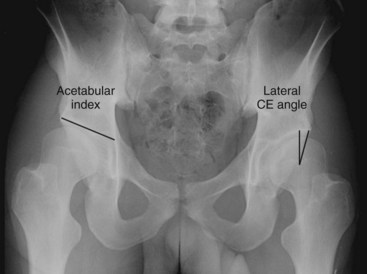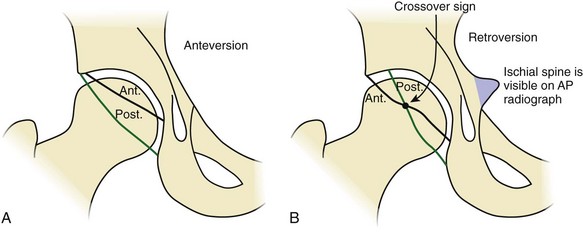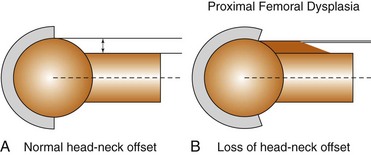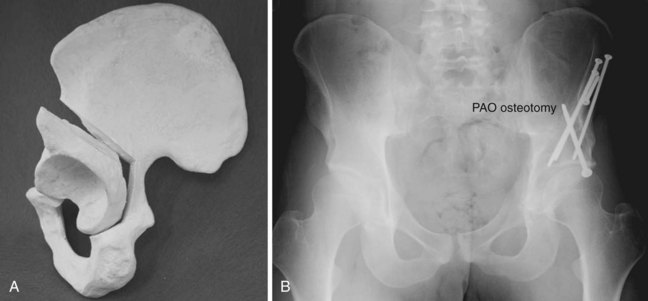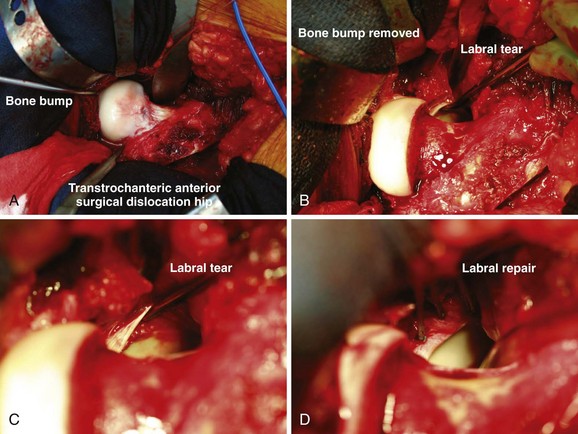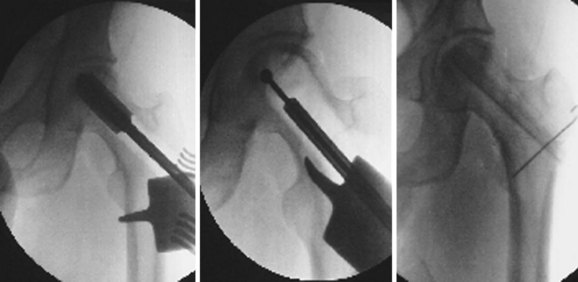Adult Reconstruction
SECTION 1 HIP DYSPLASIA—ADULT PRESENTATION
SECTION 2 HIP ARTHRITIS ASSESSMENT
SECTION 3 HIP ARTHRITIS TREATMENT
SECTION 4 OSTEONECROSIS OF THE HIP
SECTION 5 TOTAL HIP ARTHROPLASTY
III. Osteolysis Around THA Prosthesis—Effective Joint Space
IV. Particle Debris Formation—Linear versus Volumetric Wear
SECTION 8 PERIPROSTHETIC THA FRACTURE
SECTION 9 TOTAL ARTICULAR RESURFACING
SECTION 11 THA—JOINT STABILITY
I. Incidence of THA Dislocation
II. Risk Factors for Dislocation
III. Dislocating THA—Assessment
SECTION 12 THA—ARTICULAR BEARING TECHNOLOGY
SECTION 13 KNEE ARTHRITIS ASSESSMENT
SECTION 14 KNEE ARTHRITIS TREATMENT
SECTION 15 TOTAL KNEE ARTHROPLASTY
IV. Preoperative Planning for TKA
VI. Coronal Plane Ligament Balancing in TKA
II. Cruciate-Retaining Primary TKA Design
III. Cruciate-Sacrificing Primary TKA Design
IV. Posterior Stabilized Primary TKA Design
V. Anterior Stabilized Primary TKA Design
VI. Tibial Rotating Platform in Primary TKA
SECTION 18 PATELLAR TRACKING IN TKA
III. TKA Techniques to Optimize Patellar Tracking
IV. Intraoperative Assessment of Maltracking
SECTION 19 CATASTROPHIC WEAR IN TKA
I. Premature Failure of TKA Implant
II. Factors Involved in Catastrophic Wear
SECTION 20 SHOULDER ARTHROPLASTY
I. Glenohumeral Arthritis and Glenoid Wear
II. Shoulder Arthroplasty—Contraindications
section 1 Hip Dysplasia—Adult Presentation
A Hip pain in adults under the age of 50 years usually is a result of hip dysplasia.
B Untreated dysplasia leads to degenerative joint disease in greater than 50% of patients by age 50 years.
C Initial presentation of symptoms is soon followed by degeneration.
III CLASSIFICATION OF ADULT HIP DYSPLASIA
IV ACETABULAR DYSPLASIA (Box 5-1 and Figure 5-1)
A Classical (too little coverage)
VI CLINICAL SYNDROME ASSOCIATED WITH DYSPLASIA
A Femoral acetabular impingement
1. Impingement pain and hip inflammation
2. Labral degeneration leading to tears
D Causes of femoral acetabular impingement
E Femoral acetabular impingement—two types
1. Pincer impingement (Figure 5-5)
 Anatomic aberration between socket and femoral neck that creates a mechanical block preventing further hip flexion
Anatomic aberration between socket and femoral neck that creates a mechanical block preventing further hip flexion
 The soft tissues between the bony mechanical block are pinched.
The soft tissues between the bony mechanical block are pinched.
 Typically the soft tissues damaged in pincer impingement are the acetabular labral complex.
Typically the soft tissues damaged in pincer impingement are the acetabular labral complex.
2. Cam impingement (Figure 5-6)
 Anatomic aberration in the proximal femoral neck creates a raised area (cam). The neck cam impinges upon the articular surface of the acetabulum in hip flexion.
Anatomic aberration in the proximal femoral neck creates a raised area (cam). The neck cam impinges upon the articular surface of the acetabulum in hip flexion.
 Compared to pincer impingement, the femoral neck is allowed to travel underneath the labrum a short distance, thus impinging more upon the articular surface.
Compared to pincer impingement, the femoral neck is allowed to travel underneath the labrum a short distance, thus impinging more upon the articular surface.
 Typically, the area of soft tissue damage in cam impingement is the chondral surface of the acetabulum.
Typically, the area of soft tissue damage in cam impingement is the chondral surface of the acetabulum.
A Treatment depends upon the extent of deformity and location.
B Surgical correction goals are to relieve pain and to correct anatomic deformity. Long-term goal is to reduce the occurrence of degenerative joint disease.
C Surgical correction addresses the main anatomic deformity: shallow socket, retroverted socket, reduced femoral neck offset (i.e., fat neck), abnormal femoral neck version.
E Periacetabular osteotomy (Figure 5-7)
1. Allows large degree of socket correction
2. Permits joint medialization (i.e., center of hip rotation is positioned medial)
F Anterior hip decompression (Figure 5-8)
1. Technique is not used for shallow-socket dysplasia.
section 2 Hip Arthritis Assessment
I PHYSICAL EXAMINATION TESTS FOR HIP IRRITABILITY
2. Hip adduction and internal rotation yield pain response.
3. Hip internal rotation only yields pain response.
4. Pain located in area of anterior hip with pain radiating to either posterior hip or lateral hip
1. Patient is positioned supine. Finger rolling of leg (at calf level) into internal rotation and external rotation
1. Patient is positioned supine. Active straight leg raise of approximately 20 cm against mild resistance by examiner
2. Patient will feel pain in anterior hip against resistance.
1. Patient is positioned supine. Leg is positioned in figure-four position.
2. Pain will be elicited in area of anterior hip region or posterior hip region.
3. Be careful with interpretation of test. If pain is located over posterior pelvis, this indicates referred pain from L5-S1 facets or sacroiliac joint and not hip joint.
section 3 Hip Arthritis Treatment
 Traumatic labral tear not associated with dysplasia
Traumatic labral tear not associated with dysplasia
 Hip joint shows mechanical signs of locking, catching, and clicking.
Hip joint shows mechanical signs of locking, catching, and clicking.
2. Beware of labral resection in dysplasia.
 Acetabular labrum provides stability in a shallow acetabular socket (labrum usually is hypertrophic).
Acetabular labrum provides stability in a shallow acetabular socket (labrum usually is hypertrophic).
 Isolated removal of labrum will typically result in rapid progression of joint degeneration and pain.
Isolated removal of labrum will typically result in rapid progression of joint degeneration and pain.
 In cases of significant dysplasia, arthroscopic débridement is not recommended.
In cases of significant dysplasia, arthroscopic débridement is not recommended.
1. Less frequently used as THA technology advances
 Abnormal gait causes arthritis in these adjacent joints in 60% of patients.
Abnormal gait causes arthritis in these adjacent joints in 60% of patients.
 Symptoms of pain typically start within 25 years of hip fusion.
Symptoms of pain typically start within 25 years of hip fusion.
1. Usually last step before hip disarticulation in a frustrating downward clinical course
 Patients are most often immune compromised.
Patients are most often immune compromised.
 Recurrent periprosthetic THA infection
Recurrent periprosthetic THA infection
 Noncompliant patient with recurrent THA dislocation
Noncompliant patient with recurrent THA dislocation
 Intractable pain from arthritis
Intractable pain from arthritis
 Hip fracture with open decubitus ulcers
Hip fracture with open decubitus ulcers
 Significant contracture interfering with hygiene and posture
Significant contracture interfering with hygiene and posture
 Failed hip fusion in patient with prior major trauma to hip and/or pelvis
Failed hip fusion in patient with prior major trauma to hip and/or pelvis
1. Relegated to specific limited role
 Fracture treatment in low-demand elderly patient
Fracture treatment in low-demand elderly patient
 Best indication—displaced subcapital hip fracture with little or no prior history of symptomatic hip arthritis
Best indication—displaced subcapital hip fracture with little or no prior history of symptomatic hip arthritis
section 4 Osteonecrosis of the Hip
II ETIOLOGY (see Chapter 1, Basic Science)
A Hypercoagulable states may explain many idiopathic cases of osteonecrosis of the hip.
B In all cases, end-stage result is vascular occlusion in the juxtaarticular sinusoids adjacent to joint.
A Initial pain with sit to stand, stairs, inclines, and impact loading
B Pain location tends to be most noticeable in anterior hip.
C Can be acute in onset (acute infarct phenomenon), which can mimic an acute injury
A Start first with radiographs.
B MRI is the standard imaging modality when radiographs are negative and osteonecrosis is suspected.
Table 5-1![]()
Modified Ficat Staging System for Osteonecrosis of the Hip

DJD, degenerative joint disease; MRI, magnetic resonance imaging.
1. Surgical treatment depends on these major variables.
 Head collapse (i.e., crescent)
Head collapse (i.e., crescent)
 Extent of head involvement (by osteonecrosis)
Extent of head involvement (by osteonecrosis)
 Described as volume head involvement
Described as volume head involvement
 Volume head involvement equals percent head involved on anteroposterior image multiplied by percent head involved on lateral image (e.g., 50% × 50% = 25% volume head involvement).
Volume head involvement equals percent head involved on anteroposterior image multiplied by percent head involved on lateral image (e.g., 50% × 50% = 25% volume head involvement).
 A—small lesion: less than 15% head involvement
A—small lesion: less than 15% head involvement
2. Younger age and crescent (or worse)
3. Younger age and no crescent
 Vascularized fibular strut (Figure 5-10)
Vascularized fibular strut (Figure 5-10)
 Surgical removal of necrotic segment
Surgical removal of necrotic segment
 Vascularized fibular strut is placed up against subchondral plate of femoral head to prevent collapse.
Vascularized fibular strut is placed up against subchondral plate of femoral head to prevent collapse.
 Medium (B) and large (C) lesions
Medium (B) and large (C) lesions

